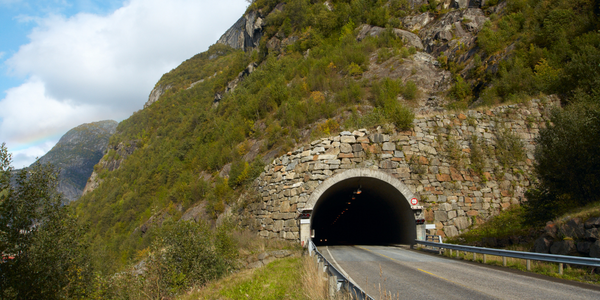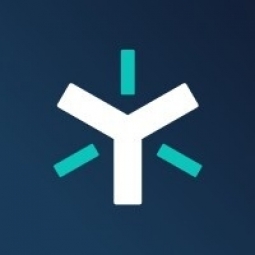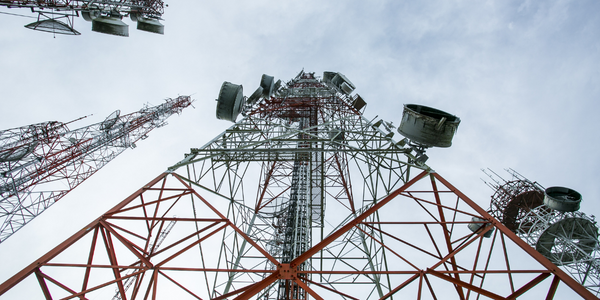技术
- 网络与连接 - WiFi
- 机器人 - 轮式机器人
适用行业
- 建筑与基础设施
- 电信
适用功能
- 采购
用例
- 时间敏感网络
- 资产跟踪
服务
- 系统集成
关于客户
Blackmon-Farrell 成立于 1981 年,是一家位于纽约州罗彻斯特的商业电气承包商。该公司处理整个纽约州的一系列工业、市政和商业建筑和安装需求,其核心业务是设计建造和投标规格项目,其中 90% 的项目是为州和地方政府提供的。其一些著名的项目包括蓝十字体育场、门罗县司法厅和罗彻斯特理工学院。作为专业承包商,劳动效率是 Blackmon-Farrell 最关心的问题,生产力的提高通常以分钟为单位。公司持续关注员工效率,将其作为衡量成功的标准。
挑战
Blackmon-Farrell 是一家位于纽约州罗彻斯特的商业电气承包商,该公司正在努力解决纸质流程效率低下的问题。公共部门合同的投标需要大量文件,这些文件是手动管理的,导致工作流程挑战和人力浪费。结束一个项目需要跟踪 100 多个未结采购订单的状态,这是一个耗时且乏味的过程。变更单也影响了进度,需要进行现场考察或筛选不同版本的图纸来汇总估算。现场团队使用移动设备实时访问、查看和注释 Bluebeam 文件,但连接问题导致该过程缓慢。一些团队使用个人热点,但通常在几周内就超出了其数据容量,导致带宽受限和成本高昂。该公司每个用户每月至少花费 80 美元用于无线数据费用。需要打印多份计划并手动扫描大型图纸,这增加了效率低下和成本。
解决方案
Blackmon-Farrell 求助于 Egnyte 来实现流程的数字化、自动化和管理。 Egnyte 简单的文件结构使文件管理变得容易,具有标准化的项目文件夹模板和分配给每个文件夹的作业编号。通过专门的“返回文件夹”来存储成本和现场支持文档,变更订单流程得到了简化。作为基于云的集中式文档解决方案,Egnyte 允许每个人从任何地方访问项目文件。现场主管可以直接进入 Egnyte 中的指定文件夹,而不必搜索旧电子邮件或纸质文件。团队使用文件和文件夹的链接而不是附加大型 PDF,即使在低带宽位置也能快速访问信息。通过上传到专用文件夹来直接与现场客户和团队交换文件的能力减少了打印多套计划和扫描数百份单独文档的需要。
运营影响
数量效益

Case Study missing?
Start adding your own!
Register with your work email and create a new case study profile for your business.
相关案例.

Case Study
IoT System for Tunnel Construction
The Zenitaka Corporation ('Zenitaka') has two major business areas: its architectural business focuses on structures such as government buildings, office buildings, and commercial facilities, while its civil engineering business is targeted at structures such as tunnels, bridges and dams. Within these areas, there presented two issues that have always persisted in regard to the construction of mountain tunnels. These issues are 'improving safety" and "reducing energy consumption". Mountain tunnels construction requires a massive amount of electricity. This is because there are many kinds of electrical equipment being used day and night, including construction machinery, construction lighting, and ventilating fan. Despite this, the amount of power consumption is generally not tightly managed. In many cases, the exact amount of power consumption is only ascertained when the bill from the power company becomes available. Sometimes, corporations install demand-monitoring equipment to help curb the maximum power demanded. However, even in these cases, the devices only allow the total volume of power consumption to be ascertained, or they may issue warnings to prevent the contracted volume of power from being exceeded. In order to tackle the issue of reducing power consumption, it was first necessary to obtain an accurate breakdown of how much power was being used in each particular area. In other words, we needed to be able to visualize the amount of power being consumed. Safety, was also not being managed very rigorously. Even now, tunnel construction sites often use a 'name label' system for managing entry into the work site. Specifically, red labels with white reverse sides that bear the workers' names on both sides are displayed at the tunnel work site entrance. The workers themselves then flip the name label to the appropriate side when entering or exiting from the work site to indicate whether or not they are working inside the tunnel at any given time. If a worker forgets to flip his or her name label when entering or exiting from the tunnel, management cannot be performed effectively. In order to tackle the challenges mentioned above, Zenitaka decided to build a system that could improve the safety of tunnel construction as well as reduce the amount of power consumed. In other words, this new system would facilitate a clear picture of which workers were working in each location at the mountain tunnel construction site, as well as which processes were being carried out at those respective locations at any given time. The system would maintain the safety of all workers while also carefully controlling the electrical equipment to reduce unnecessary power consumption. Having decided on the concept, our next concern was whether there existed any kind of robust hardware that would not break down at the construction work site, that could move freely in response to changes in the working environment, and that could accurately detect workers and vehicles using radio frequency identification (RFID). Given that this system would involve many components that were new to Zenitaka, we decided to enlist the cooperation of E.I.Sol Co., Ltd. ('E.I.Sol') as our joint development partner, as they had provided us with a highly practical proposal.

Case Study
Splunk Partnership Ties Together Big Data & IoT Services
Splunk was faced with the need to meet emerging customer demands for interfacing IoT projects to its suite of services. The company required an IoT partner that would be able to easily and quickly integrate with its Splunk Enterprise platform, rather than allocating development resources and time to building out an IoT interface and application platform.

Case Study
Bridge monitoring in Hamburg Port
Kattwyk Bridge is used for both rail and road transport, and it has played an important role in the Port of Hamburg since 1973. However, the increasing pressure from traffic requires a monitoring solution. The goal of the project is to assess in real-time the bridge's status and dynamic responses to traffic and lift processes.

Case Study
Bellas Landscaping
Leading landscaping firm serving central Illinois streamlines operations with Samsara’s real-time fleet tracking solution: • 30+ vehicle fleet includes International Terrastar dump trucks and flatbeds, medium- and light-duty pickups from Ford and Chevrolet. Winter fleet includes of snow plows and salters.









